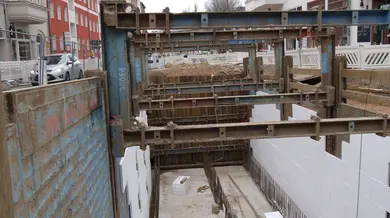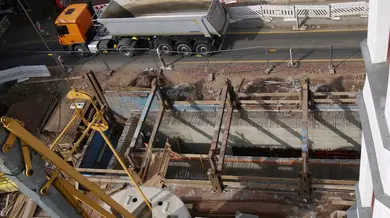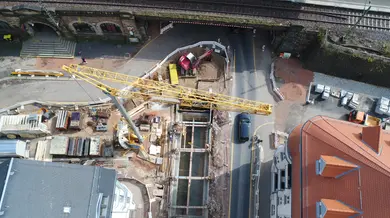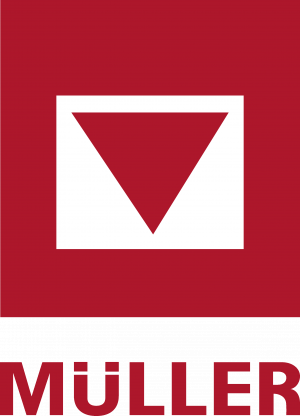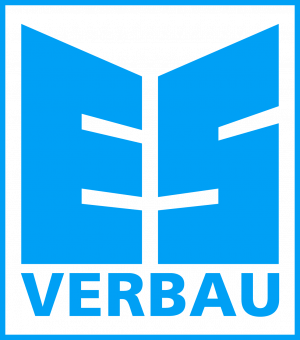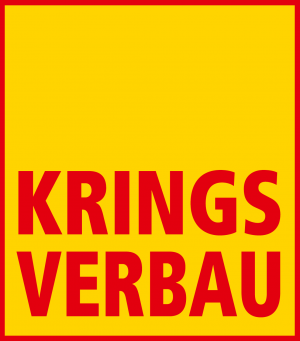CHEMNITZ RAINWATER OVERFLOW SEWAGE TREATMENT PLANT
Categorie: References

CHEMNITZ RAINWATER OVERFLOW SEWAGE TREATMENT PLANT
Within the frame of the new construction of a roundabout at the South Station of Chemnitz, all media such as canalisation, current, gas, drinking water, lightning and communication were renewed or redeveloped and in addition a rain overflow structure was newly created in the area of the busy traffic junction. At the safety fuse of the excavation pit for the construction of the rainwater overflow structure, the customer relied on a special proposal that included the use of an E+S linear shoring system. And it was a success: with linear shoring, which is suitable for in-situ concrete and can be used flexibly for many construction projects, the ground outside the trench remains largely untouched, and buildings and traffic flow are not affected. Technological features such as these contributed significantly to the smooth and timely construction of the 16-metre-long, 5.5-metre-wide and 5.2-metre-high in-situ concrete structure with overflow sill despite the cramped conditions on the inner-city construction site, with the walls of the structure being concreted directly against the shoring.
Due to the spatial conditions on site and in particular with a view to the dense development in the construction field, the excavation was secured with the E + S linear shoring system, contrary to the original alternative, and not with Sheet piles. This provided many technical and economical advantages during the installation and removal of the modules as well as when working in the excavation. Five modules of the shoring system – comprising inside and outside baseplates and an inside top plate as well as 6.13-metre-long linear shoring soldiers and the roller units – were kept on site. The advantages of the linear shoring system were already apparent when the first shoring unit was set up. After pre-assembling the pairs of soldiers with the roller units and the required extensions, the trench was excavated to a depth of around 1.50 metres for a bay length of one bay length. The next step was the adjustment of the first pair of soldiers. The excavator then swung the outside baseplates into the beams not from on top, as is usual with other systems, but laterally, just above ground level. This procedure is made possible by the large open guide profiles of the linear shoring beams. As soon as the plates are aligned at right angles to the roller unit and parallel to each other, the second pair of beams can easily be inserted into the ends of the plates from above.
Frictional forces reduced
After installation, the beams and shoring plates were covered with a polystyrene separating layer. This procedure was necessary to prevent the direct linkage between the concrete and the steel shoring elements and to reduce the frictional forces when removing the plates and beams. The next step was to concrete the floor of the storm water overflow tank. Once the concrete had reached the minimum strength, an excavator was used to adjust the no. / position of the roller units in accordance with the manufacturer's static specifications. This created the necessary working space to construct the inner formwork for concreting the walls of the rainwater overflow basin. After the ceiling had been constructed, the excavator was able to start dismantling. Since the forces required for dismantling are much lower than with most other shoring systems, the overall efficiency of the system is increased. Rigid carriages, which are vertically adjustable in line with the increasing depth, keep Beams and shoring plates at the same distance; the trench width remains the same in every construction phase. This ensures more effective, faster, higher-quality and noticeably more economical work.
